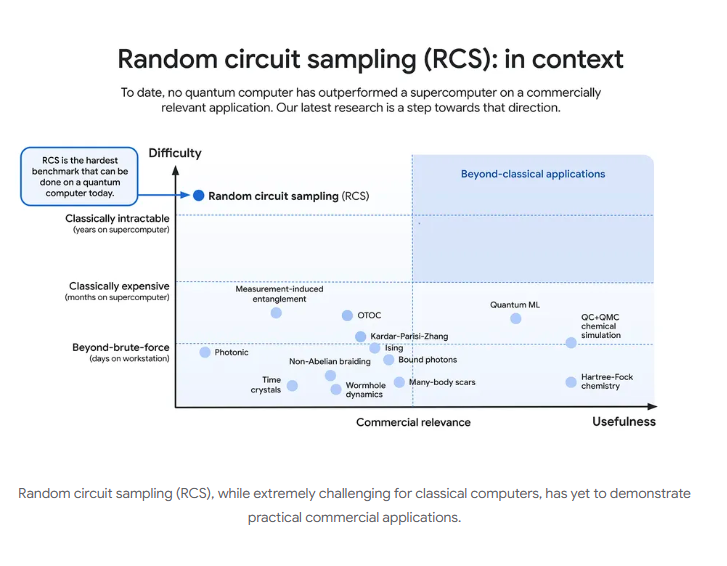Introducing Willow, our cutting-edge quantum chip designed to push the boundaries of computational power. Built with precision engineering and groundbreaking quantum architecture, Willow is set to redefine the limits of problem-solving in fields ranging from cryptography to complex simulations.
Willow represents a leap toward practical quantum applications, combining scalability, stability, and speed. Stay tuned as we unlock the potential of quantum computing with this remarkable innovation!
Table of Contents
Willow: Google’s Quantum Leap Toward the Future of Computing
Willow, the latest innovation from Google Quantum AI, represents a groundbreaking advance in quantum computing. It tackles two monumental challenges in the field:
- Exponential Error Reduction: Willow reduces quantum computation errors as the number of qubits scales up, solving a critical problem in quantum error correction that researchers have pursued for nearly 30 years.
- Unmatched Computational Power: In a standard benchmark test, Willow completed a computation in under five minutes—an operation that would take the fastest supercomputer 10 septillion years (10²⁵ years), an incomprehensibly vast duration surpassing the age of the universe.
This milestone is the culmination of over a decade of effort since the founding of Google Quantum AI in 2012. The vision has always been to create a large-scale quantum computer capable of harnessing quantum mechanics, the “operating system” of nature, to drive scientific discovery, create transformative applications, and address society’s most pressing challenges.
As part of Google Research, Quantum Computing is a significant step forward on the roadmap to realizing commercially viable quantum computing, bringing society closer to unlocking unprecedented possibilities.
Also Read:https://coveragezone31.com/sora
Quantum Achieves Exponential Quantum Error Correction, Setting a New Benchmark
Errors are one of the toughest challenges in quantum computing. Qubits, the basic units of quantum computation, are notoriously unstable, often losing information through interactions with their environment. This instability has traditionally meant that as quantum systems scale up, they encounter more errors, risking a reversion to classical behavior.
With Quantum, Google’s quantum team has overcome this fundamental hurdle. Published today in Nature, results demonstrate that Willow reduces errors exponentially as more qubits are added, achieving what the field calls “below threshold.” This milestone—achieved for the first time—proves that larger quantum systems can be made more stable by using advanced quantum error correction techniques.
Key breakthroughs include:
- Exponential Error Reduction: Scaling from a 3×3 grid to 5×5 and 7×7 grids of encoded qubits, Willow halved error rates with each expansion. This is a historic accomplishment first theorized in 1995 by Peter Shor.
- Real-Time Error Correction: Willow demonstrates real-time error correction on a superconducting quantum system, crucial for completing computations before errors disrupt results.
- Beyond Breakeven Performance: Willow’s qubit arrays have longer operational lifetimes than individual qubits, proving that error correction improves the system as a whole.
As the first system to achieve “below threshold” status, Willow is the most convincing scalable logical qubit prototype ever built. This achievement brings the dream of large-scale, commercially-relevant quantum computers closer to reality, paving the way for running algorithms that surpass the capabilities of classical supercomputers.
Willow Shatters Limits: Quantum Computing Outperforms Classical Supercomputers by 10 Septillion Years
Quantum Computing performance in the random circuit sampling (RCS) benchmark, one of the most challenging tasks in quantum computing, has set an unprecedented record. Developed by Google’s Quantum AI team, the RCS benchmark is designed to test whether a quantum computer can outperform classical systems in solving complex problems that are classically impossible.
Willow’s remarkable achievement: it completed a computation in under five minutes that would take one of today’s fastest supercomputers 10 septillion years (10²⁵ years) to finish. To put it in perspective, that’s 10,000,000,000,000,000,000,000,000 years—a number that far exceeds the current age of the universe.
This astonishing performance reinforces the quantum computing paradigm, where operations occur simultaneously across parallel universes, supporting the multiverse theory first proposed by physicist David Deutsch. Willow’s milestone is the latest step forward in Google’s mission to build a quantum computer capable of solving problems beyond the reach of classical machines, with even more progress to come in future generations of quantum chips. Source https://blog.google/technology/research/google-willow-quantum-chip/

Chart: Comparing Quantum Computing Platforms on Random Circuit Sampling (RCS) Performance
This chart compares the performance of various quantum computing platforms in solving the Random Circuit Sampling (RCS) benchmark, which tests the ability to perform quantum computations that classical systems cannot replicate.
Key Points:
- Computational Costs & Memory: The performance of these platforms is heavily influenced by available memory. Our estimates take into account a variety of scenarios, ranging from ideal conditions with unlimited memory (▲) to more realistic conditions involving embarrassingly parallelizable implementations on GPUs (⬤).
- Quantum vs Classical: Quantum systems, like Willow, are compared with classical supercomputers. As the chart shows, quantum computing platforms, especially those with advanced error correction and optimization techniques, drastically outperform classical systems in this task.
The chart illustrates a dramatic performance gap, with quantum computers leading the pack in terms of computation speed, even under practical limitations such as memory constraints. This demonstrates the power of quantum computing, particularly in applications that challenge classical systems, and underscores why benchmarks like RCS are vital for tracking advancements in the field.

Willow: State-of-the-Art Quantum Chip Fabrication and Performance
Willow represents the pinnacle of quantum chip engineering, fabricated in our new state-of-the-art facility in Santa Barbara, one of the few such facilities globally designed specifically for quantum chip production. The system engineering behind Willow is crucial, as it ensures the seamless integration of all chip components—such as single and two-qubit gates, qubit reset, and readout—into a high-performing system. Any misalignment or inefficiency in these components can reduce overall system performance, so maximizing efficiency and integration is essential in our process.
Focus on Quality Over Quantity
Rather than simply scaling up the number of qubits, we prioritize quality. Willow is equipped with 105 qubits, and it has set new performance benchmarks across quantum error correction and random circuit sampling. These algorithmic benchmarks provide a comprehensive measure of a quantum chip’s overall performance, ensuring that Willow’s capabilities are fully realized.
Key Performance Metrics
- T1 Times: Willow’s T1 times—a measure of how long qubits retain their excitation (a crucial quantum computational resource)—are now approaching 100 µs (microseconds), representing a ~5x improvement over the previous generation. This improvement significantly enhances the chip’s computational capabilities.
By focusing on these critical aspects of system performance, Willow is setting the stage for practical, large-scale quantum computers capable of solving problems beyond the reach of classical systems.



